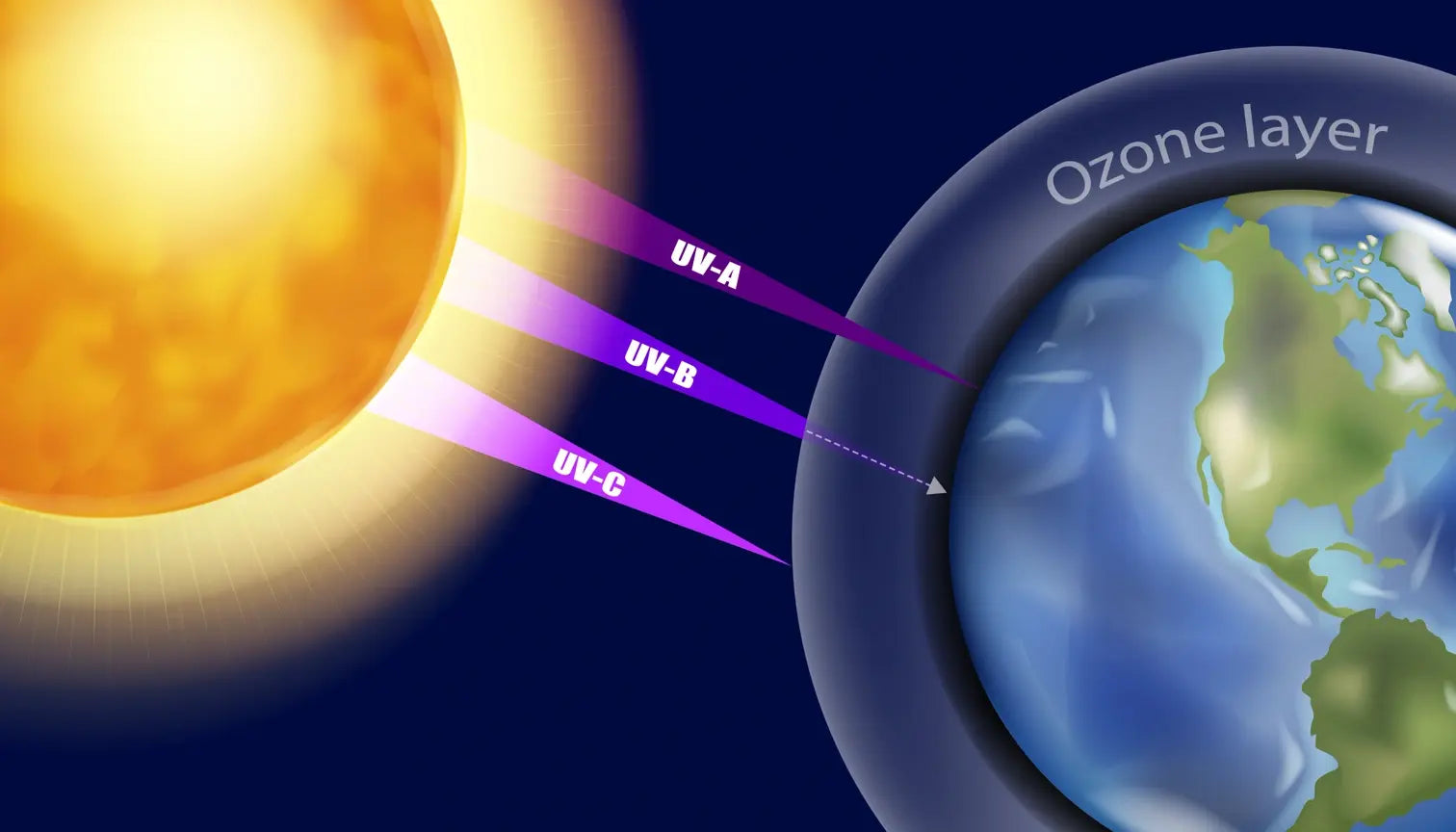Understanding UV Radiation

- It creates free radicals, such as reactive oxygen species (ROS), which damage the proteins, including collagen and elastic fibers, and cause damage to DNA.
- It induces senescence, increasing the number of senescent cells in the skin. Senescent cells secrete a number of harmful biochemicals, including matrix metalloproteinases (MMPs) which degrade collagen proteins.
- It degrades skin’s barrier function. When the skin barrier is disrupted, skin’s sensitivity to UV increases, making this a self-perpetuating cycle of cellular damage.
- It destroys the dermal structure, replacing collagen with nonfunctional elastic tissue in the dermis (“solar elastosis”).
- It’s primarily responsible for the photoaged appearance of skin including the five key signs of skin aging: fine lines and wrinkles, enlarged pores, redness, pigmentation, and sagging skin.
What is UVB?
What are the Impacts of UVB rays?
Does My Sunscreen Protect Against UVB Rays?

What is UVA?

What are the Impacts of UVA Rays?
Does My Sunscreen Protect Against UVA Rays?


- PPD Scale: Commonly used in European countries, PPD (persistent pigment darkening) measures how protective a sunscreen is against a long-term tan caused by UVA. (10)
- PA+ Scale: PA (Protection Grade of UVA) is analogous to PPD, but uses + signs instead of numbers to indicate the level of UVA protection. The PA+ system is used more commonly in Asian countries. (10)

To Summarize:

Protect Skin from UVA and UVB Rays with OneSkin
- UV radiation, emitted by the sun, causes damage to skin cells. It's divided into UVA, UVB, and UVC rays, with UVA and UVB being of the most concern.
- UVB rays are short-wavelength and primarily affect the skin's outermost layer, the epidermis. They’re responsible for sunburns and play a significant role in the development of skin cancers.
- UVA rays have longer wavelengths and penetrate the skin more deeply, affecting the collagen structure in the dermis. These types of rays are primarily responsible for skin aging.
- To protect skin from UVA and UVB rays, look for a broad-spectrum sunscreen with listed a PPD or PA+ scale to tell you the level of UVA protection.
- New! OS-01 BODY SPF and OS-01 SHIELD offer broad-spectrum SPF 30+ PA+++ protection and are powered by the OS-01 peptide.
- https://www.ncbi.nlm.nih.gov/pmc/articles/PMC3709783/
- https://www.who.int/news-room/questions-and-answers/item/radiation-ultraviolet-(uv)
- https://onlinelibrary.wiley.com/doi/full/10.1111/jocd.13007
- https://www.ncbi.nlm.nih.gov/pmc/articles/PMC8597149/
- https://www.ncbi.nlm.nih.gov/pmc/articles/PMC3460660/
- https://pubmed.ncbi.nlm.nih.gov/10907526/
- https://www.jaad.org/article/S0190-9622(12)02042-7/abstract
- https://www.ulprospector.com/knowledge/7288/pcc-eu-spf-regulations-labelling-and-claims/
- https://www.sciencedirect.com/science/article/abs/pii/S019096221730035X
- https://www.ncbi.nlm.nih.gov/pmc/articles/PMC3543289/
- https://www.nature.com/articles/s41514-023-00109-1



